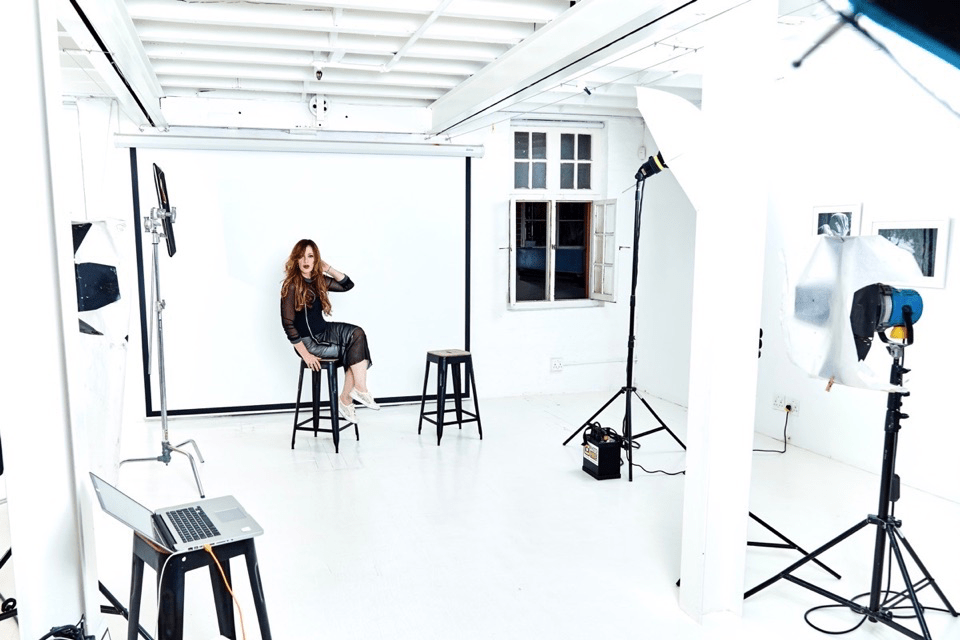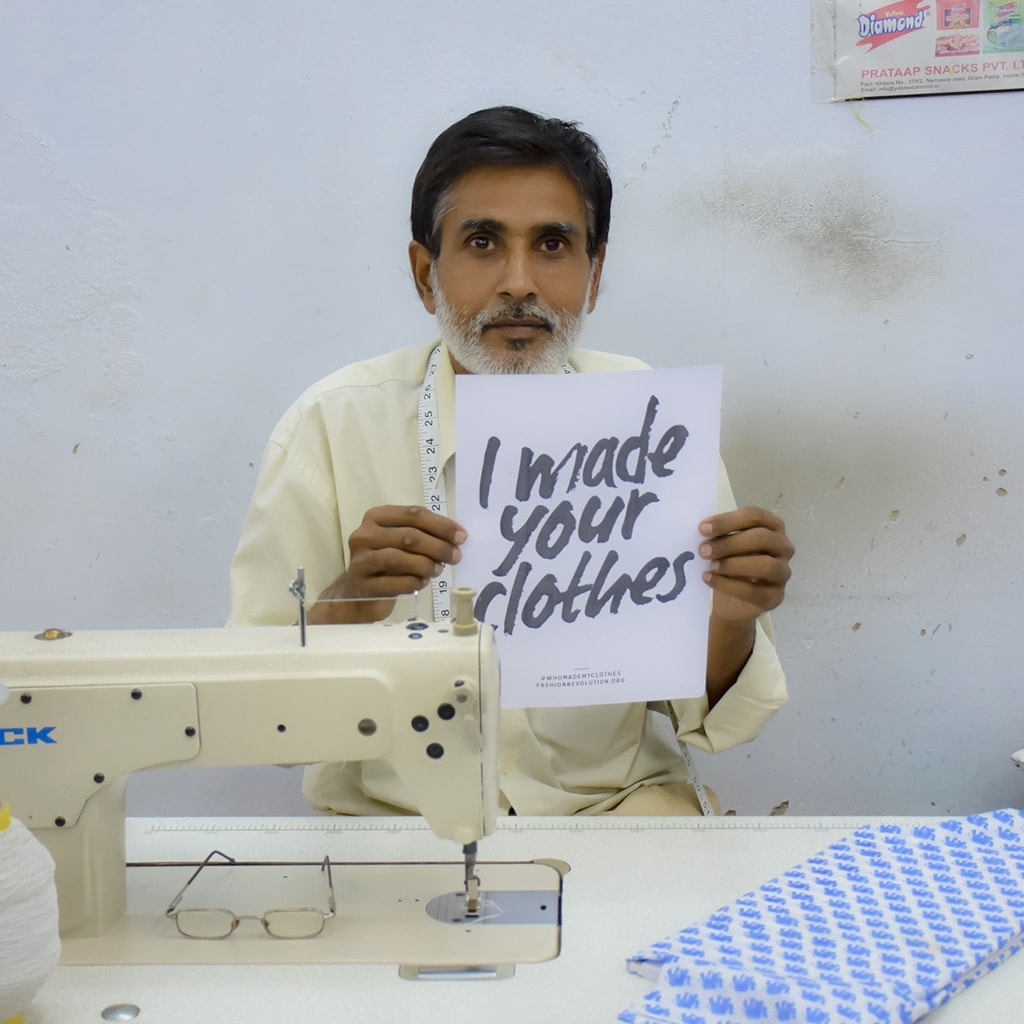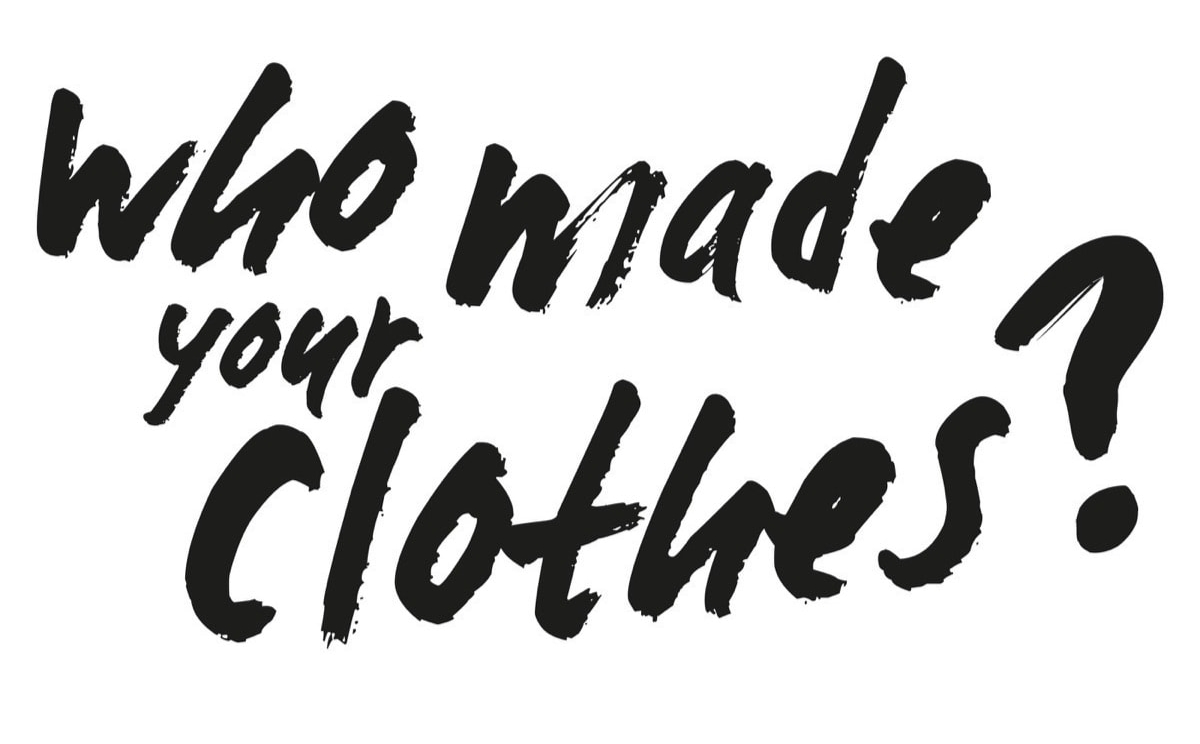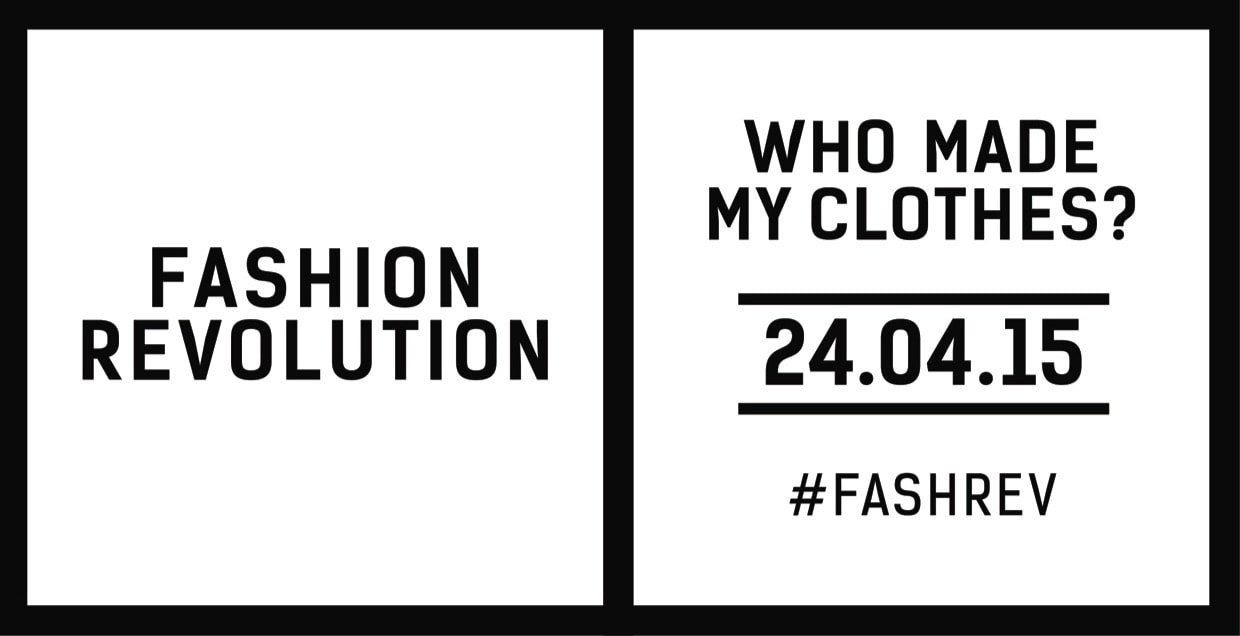Cyril Naicker, board member for Fashion Revolution South Africa sat down with Pnina Fenster, Editor of GLAMOUR South Africa, during a recent photo shoot for the campaign.
Headed up by Tammy Nicol, country coordinator for Fashion Revolution South Africa, the team have been working at great momentum these past few months leading to up to the 24th April when Fashion Revolution Day – globally and United says “enough is enough” and asks the question for this year’s campaign: Who made my clothes?
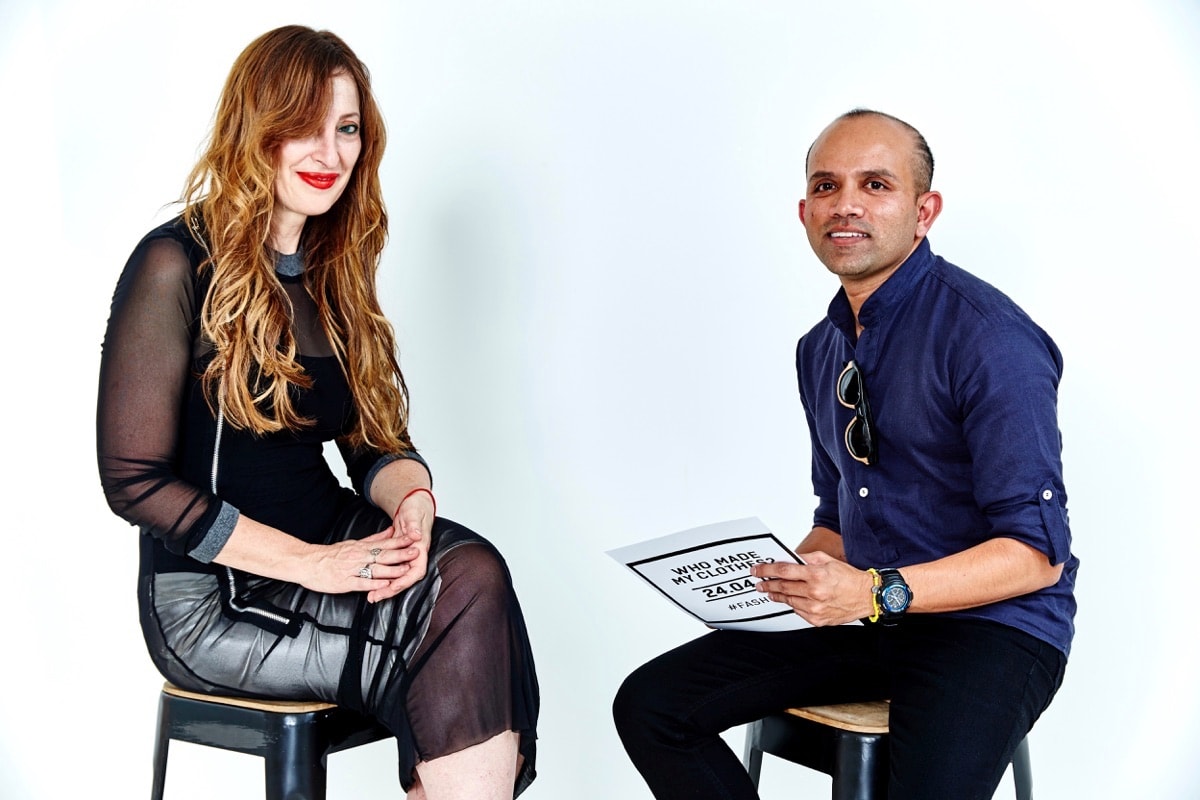
Cyril Naicker, board member for Fashion Revolution South Africa sat down with Pnina Fenster, Editor of GLAMOUR South Africa, during a recent photoshoot for the campaign.
I’ve known Pnina for a few years now, and the one charming characteristic that sets her apart from most is in how she treats others. Apart from her beautiful looks, alabaster skin, locks of hair beautifully set and signature red lips, Pnina is simply one of the nicest people you will come to know. She arrives on set and immediately gets around to each person and introduces herself and thanks them for their time. This is rare in an industry known for egos, and this is a beautiful thing to observe.
It’s a sweltering hot day in Cape Town, and Ernst Heusser is busy wrapping up the previous shoot with local designer Celeste Lee Arendse of Selfi.
Last year, for the first ever Fashion Revolution Day, people in over 55 countries took part to show they cared about who made their clothes. With over 6.6 million hits on Google, it quickly became the #1 trend on Twitter, and extensive coverage in international press followed, reaching over 80 million people through an extensive media campaign. The campaign promises to be bolder and bigger this year.
It was Ben Harrison who said ‘I pity the man who wants a coat so cheap that the man who produces the cloth starves in the process’ this quote captures the heart of what Fashion Revolution is all about. It is more than a campaign; it’s about starting a conversation. Do you know who makes your clothes?
Speaking of conversation. Here is mine with Pnina on behalf of StyleSociety:
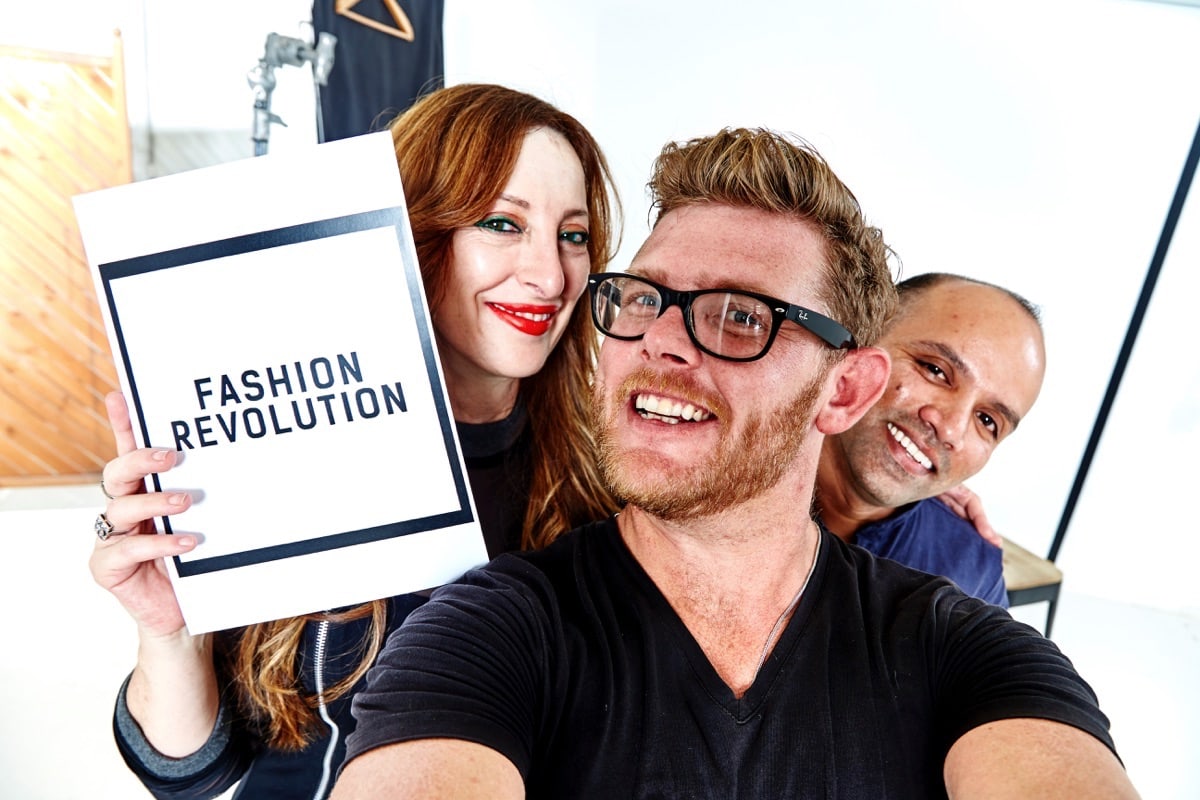
Cyril Naicker, a board member for Fashion Revolution South Africa sat down with Pnina Fenster, Editor of GLAMOUR South Africa, during a recent campaign shoot.
Cyril: It seems as though we are on the verge of change where ethical fashion is concerned. How do you feel about the changing role of the designer?
Pnina: Designers can play a great role in encouraging this shift — and many already are.
In the world of global designer brands, for example, Stella McCartney and Vivienne Westwood are great game-changers. In South Africa, Craig Jacobs of Funduzi, and the Lalesso brand among others are devoted to creating clothing that is both creative and conscious.
International projects like Diesel and Edun, Pinko for Ethiopia and Gucci Green are just some of growing number of initiatives.
And it’s not just designers. Woolworths, Topshop, H&M, and many more chainstores have made strides in this arena
Cyril: What advice do you have for up and coming South African designers regarding ethical fashion?
Pnina: I wouldn’t presume to advise South Africa’s Fashion Designers on how to run their businesses — fashion is a demanding game, and I admire their dedication, creativity and passion.
All I can say is that our country offers many opportunities for designers to collaborate with talented craftspeople, such as beaders, embroiderers and knitters, and it’s wonderful to see these avenues being explored because that’s the way jobs are created, opportunities are shared, creativity flourishes, and love grows.
Cyril: Do you think that consumers are becoming more aware of the story behind fashion?
Pnina: Consumers are becoming increasingly aware of this story, but we all have a long way to go — and I include myself in this! This is why Fashion Revolution is such an important drive.
I believe that as many people as possible should be able to dress in a way that makes them feel good. It’s a lovely part of being human, it raises self-esteem, and it connects to self-expression.
At the same time, many consumers are terribly cash-strapped, and the price is their priority. I don’t know what the solution is here, but I trust that people who are infinitely more expert and clever than I am are looking at kinder, more ethical models of production.
For more affluent consumers, it’s sometimes a question of weighing up the price tag against the human cost. And there are so many other things we can do, such as recycle, buy quality and with consideration, wear vintage and make the most of what is already in our wardrobes.
Cyril: What is Fashion Revolution Day for you? How does it feel being a part of it?
Pnina: Fashion Revolution Day is a fantastic initiative, and it’s an honour to be a small part of it. I’ve always loved fashion, and I’ve always loved clothes, and Fashion Revolution Day encourages me to think about all of that with more care and consciousness. In this regard, I’m a work in progress — but who isn’t?
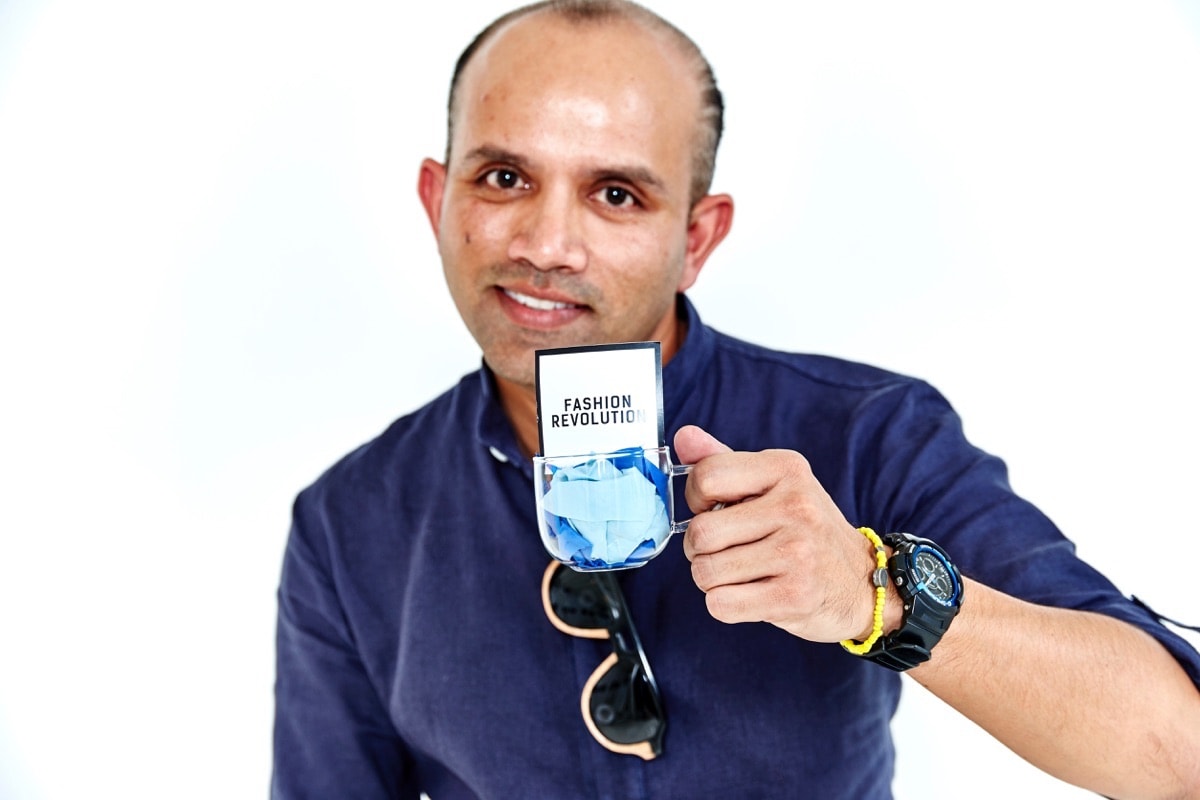
So South Africa, on 24 April, wear your clothes inside out and show your label and ask the brands WHO MADE MY CLOTHES? Let’s turn fashion into a force for good!
We invite you to participate.
We invite you to support.
We invite you to act.
Friday 24 April 2015 – International Fashion Revolution Day
For more information visit Fashion Revolution and Fashion Revolution South Africa on Facebook
About the Author:
Cyril Naicker is a passionate South African. Driven by ethical fashion, he started Cape Town InVogue and is currently producing a fashion TV show called MyVogue Africa. His aim is to market and promote Africa in the clothing and textile sector to be competitive on a global scale. Follow MyVogueSA : @MyVogueSA @cyrilnaicker
Written by Cyril Naicker for StyleSociety | Images supplied by Fashion Revolution South Africa
Creative Commons Licence: Fashion Revolution, source: fashionrevolution.org
